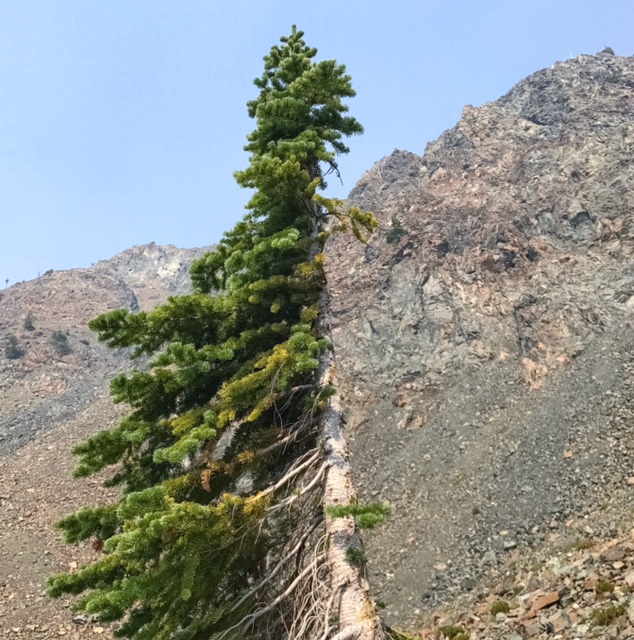Here is a subalpine fir, Abies lasiocarpa, with no branches on one side. Many trees look like this.
Some people call these "flag" trees (or, less commonly, "banner" trees) because they look like a flag standing out in the breeze.
What causes this shape?
Take some guesses:
1. Avalanches or rock slides tear off the branches on the uphill side?
2. Prevailing winds are from the right, and bend all the branches toward the downwind side?
3. The sun is usually on the left (in this picture)?
4. Snow piles up and protects one side but not the other. Or maybe snow harms one side but not the other?
5. Other trunks used to grow right next to this one but they broke off?
6. Mammals that browse on the foliage have easier access to the uphill side, especially if the animals are standing on winter snowpack?
What do you think?
Any of these ideas might contribute to the formation of flag trees, either alone or in combination. Experts have some other thoughts as well:
(A) Some experts think that winter desiccation (drying) prevents foliage from surviving on the upwind side. The idea is that dry winter winds dehydrate buds and needles faster than the tree can replace water through its roots, especially when groundwater may be frozen. The tree then becomes a flag tree.
(B) Other experts think that snow and ice crystals scour away any new buds on the upwind side, keeping one side bare. This creates a flag tree.
(C) Still other experts think that continual pressure on the upwind side causes the tree to release hormones (e.g., auxins) that inhibit lateral bud growth on that side. Chemistry creates the flag tree.
It is interesting to me that this fairly common phenomenon is not yet completely understood.
By the way, you can see flag trees not only in the mountains but also on the ocean shore. Are there two different causes? Or is there a single cause that affects trees similarly in the two different environments?
Maybe you will be the one to figure this out!

